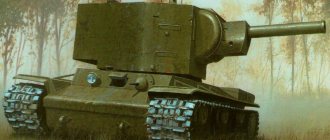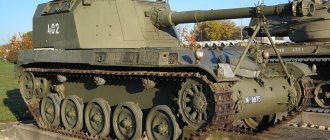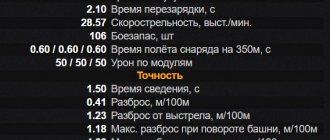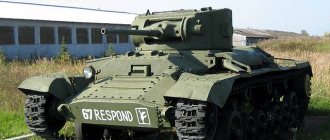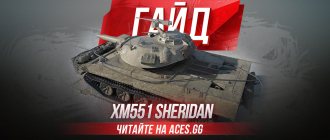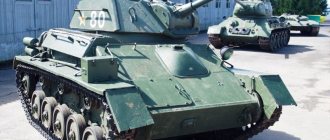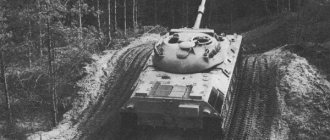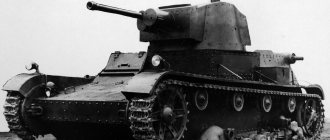In 2022, the Russian Armed Forces paid special attention to parachute landing of regular parachute units on the recently adopted BMD-4M Bakhcha.
These vehicles have repeatedly received the most flattering compliments from military analysts. For example, they successfully passed the “baptism of heaven” at the Caucasus-2020 exercises. Then ten modernized vehicles were parachuted onto the Kapustin Yar training ground. As the media wrote following the results of the exercises, “Bakhcha” has established itself as “reliable and effective military equipment.”
Main combat missions
Analysts noted that the main advantage of the vehicles is to immediately enter into battle immediately after landing, since the “descent” occurs immediately with the crew in the cockpit. For landing, "Bakhchi" use the latest parachute systems such as PBS-950U and MKS-350 - they were developed specifically for the "fours". The main combat missions of the Bakhchi include transporting paratroopers in the near and operational rear. It protects fighters from small arms and shrapnel, helping to destroy enemy firing points and manpower.
The body of the vehicle is made of lightweight aluminum, and the turret is made of steel. The armor on it is bulletproof, not oriented towards hitting more massive projectiles. Serious protection could not be installed - this would have made the hull heavier and would have made it difficult to parachute from the plane.
BDM-4M easily crosses water obstacles. The powerful 500-horsepower diesel engine UTD-29 with liquid cooling can accelerate the car to 70 kilometers per hour, and the power reserve is 500 kilometers. “Bakhcha” can change its ground clearance as tasks progress – from 190 to 590 millimeters.
Lightweight and powerful
In essence, the BMD-4M is a light tank that weighs 13.6 tons. At the same time, he has an impressive arsenal. Its “main caliber” is a 100 mm 2A70 gun with an automatic loader. It hits targets located at a distance of up to seven kilometers. Firing is carried out at a speed of 10 rounds per minute.
The gun is paired with a 30-millimeter automatic cannon of the 2A72 type - it is designed to eliminate manpower at a distance of up to four kilometers. In addition, the arsenal includes a 7.62 mm machine gun, as well as four Arkan guided anti-tank missiles. The crew fires through the barrel of the main gun.
"Bakhcha" is equipped with a modern fire control system, including a rangefinder sight with day and night channels, which the commander has. The gunner has a sight with a separate channel for controlling the ATGM and thermal imager. The gun also has a built-in stabilizer in two planes, a device for automatic target tracking and a ballistic computer. All this works using a unified information system and sensors that transmit data about the environment.
JSC "KBP" is a powerful research and production center that creates high-precision weapon systems (HTO) in the near tactical zone and modern small arms, cannon and grenade launchers.
The KBP arsenal includes the development and production of the most modern weapons systems that can successfully compete with the best foreign models; a number of products have unique tactical and technical characteristics.
Taking into account the experience of combat operations of recent decades, the KBP identifies as a priority area of activity the development and production of high-tech weapons as a means of solving combat missions, the implementation of which by traditional means is ineffective or impossible. The use of high-precision weapons makes it possible to avoid casualties among the civilian population, destruction of infrastructure and material assets, and environmental violations, which inevitably occurs when using powerful unguided weapons, such as cluster and high-explosive fragmentation artillery shells, aerial bombs and MLRS ammunition.
A special feature of the KBP's activities is the development of a wide range of high-tech systems for the tactical zone of the "surface-to-surface", "surface-to-air", and "air-to-surface" classes. The company develops such weapons for all types of troops. The most famous achievements are in the creation of anti-aircraft missile and gun systems, anti-tank missile systems, weapons systems for armored vehicles, and artillery guided weapons systems.
Along with this, the KBP branch - TsKIB SOO is developing modern small arms, cannon and grenade launchers. To equip law enforcement agencies, a system of specialized weapons has been created, including automatic, hand-held and under-barrel grenade launchers, sniper rifles, machine guns, submachine guns, pistols and revolvers.
A number of the latest models of military equipment are entering service with the Russian Army, the Ministry of Internal Affairs, and other law enforcement agencies, and are exported to various countries around the world. In the conditions of economic instability at the end of the last century, KBP managed not to lose its ideological potential, preserve and increase its scientific and technical reserves for carrying out new work, and master a number of advanced competitive technologies that meet the world level. All this allows KBP to be among the industry leaders and make a significant contribution to the development of the Russian economy through sales of military equipment on the foreign market.
The management of the enterprise considers the main condition for the development of the enterprise to be the implementation of research and development work to develop promising and modernize existing models, while investing a significant share of its own funds in R&D. The number of employees in the design departments is about 2.5 thousand.
As the lead developer of complex weapons, KBP coordinates the work of a large number of enterprises and organizations, including institutes of the Russian Academy of Sciences, and forms the ideology and prospects for the development of many types of weapons on a national scale.
KBP has a developed production base that allows the creation of prototypes and mass production of weapons under development. Machine tools and technological equipment make it possible to manufacture mechanical and electronic components and systems of varying degrees of complexity, and to carry out the final assembly of weapons.
The company is a prominent participant in the international arms market, where it has established itself as a reliable partner. KBP products receive high marks at specialized weapons exhibitions, and foreign consumers are interested in purchasing them. Products developed by KBP are in their arsenal in more than 70 countries. Currently, the order book amounts to several billion dollars.
The pride of KBP is its people - talented designers and workers. More than 1,000 people were awarded state awards and honorary titles. The company employs 15 doctors of science, 70 candidates of science, 1 academician of the Russian Academy of Sciences, 2 academicians of the Russian Academy of Rocket and Artillery Sciences, 65% of employees have higher or secondary vocational education. The company employs several thousand workers and engineers, the vast majority of whom are hereditary gunsmiths, whose fathers and grandfathers forged the glory of Tula and Russian weapons in the second half of the twentieth century, their descendants continue these glorious traditions today.
A number of products are manufactured under license in many countries around the world. In every new model of weapons that comes into being, leaving the gates of the enterprise, there lives the spirit of creativity, traditions of scientific and technical thought, innovative ideas of the many thousand-strong team of the Instrument Design Bureau.
The thorny path
Serial production of PM-4M began in 2016, but the first samples appeared much earlier. The predecessor of "Bakhchi" was BDM-3. He was not happy with the military over weapons. The Ministry of Defense wanted to get a combat vehicle with a 100-mm cannon, which the BMP-3 had, but this made the vehicle much heavier. As a result, only a 30 mm cannon of the 2A42 type was built into the body.
The next version of the BMD, designed by 2004, was a ton lighter, but it was not possible to introduce 100-mm weapons with ammunition there either. In 2005, the bankruptcy of the Volgograd Tractor Plant almost put an end to the project, but the right for further development was transferred to Kurganmashzavod. The designers managed to change the geometry of the hull, and in 2008 the first sample of the BMD-4M was presented.
Airborne combat vehicle, third (II)
The authors and editors express gratitude to G.B. Pasternak, A.I. Kovalev and A.V. Khrebtan for his assistance in preparing the article.
<<< See the first part
From Bakhchi to BMD-3
VgTZ has begun the next stage of development work - the preparation of working design documentation and the manufacture of three prototypes for preliminary tests. When weighing the assembled vehicles, it was found that they exceeded the combat weight specified by the TTZ by 190–290 kg (no more than 12.5 tons in mass production). The plant promptly presented measures to reduce weight by 290 kg, and by joint decision the Object 950 BMD was allowed for preliminary testing. Factory tests of the first three Bakhchi samples were completed in 1985.
Preliminary tests of three prototypes of the Object 950 BMD showed that the TTZ requirements were largely met. At the same time, a large number of failures and malfunctions were identified that required structural improvements. It should be noted that the tests were carried out in a difficult situation, when the head of GBTU M.Yu. Potapov used every opportunity to stop further work. The plant had to instantly respond to all identified defects or comments, develop appropriate measures and evaluate their effectiveness on prototypes. As a result, by the end of the preliminary tests, many of the shortcomings of the BMD were eliminated.
However, some problematic issues still remain unresolved, for example:
— protection against destruction of the torsion shaft connecting the engine to the transmission;
— turning on the transmission reverse in the “Forward” and “Reverse” positions without difficulty;
— loss of oil pressure in the hydraulic control and transmission lubrication system.
Preliminary testing culminated in March 1986 with coping, physiological and fitting tests. The positive results of 15 piledriver drops of the vehicle paved the way for the Object 950 BMD to flight tests for parachute landing with combat crews inside the vehicle. At the same time, there were no serious comments requiring the implementation of measures to increase the strength of the vehicle and maintain its combat capability after landing. At the same time, on the BMP-3 prototype, already after the first piledrive, the presence of deformations in the bottom and roof of the hull, jamming of the fighting compartment conveyor and other defects were recorded, indicating the loss of combat capability of the vehicle after landing.
| BMD-3 airborne combat vehicle (Object 950) |
During the production of three prototypes for state testing, many improvements were introduced aimed at increasing the reliability of the BMD with increasing weight. The combat weight of the experimental BMD “Object 950” approached 12.9 tons, and no previously announced measures to reduce weight solved this problem (chief designer A.V. Shabalin established bonuses for designers for reducing weight by even 0.5 kg). A solution was found in increasing the carrying capacity of the Il-76M and Il-76MD aircraft by 1200 kg due to a corresponding reduction in the mass of fuel on board. Thus, it became possible to “legitimize” an increase in the combat weight of the Object 950 BMD to 12.9 tons.
By a special joint decision of the GBTU and the Office of the Airborne Forces Commander in September 1986, the Object 950 BMD with such a mass was nevertheless allowed for state tests. The length of the vehicle along the body was 6065 mm (against the specified 6000 mm), the height along the turret roof was 2250 mm (corresponding to TTZ), but the nominal ground clearance was reduced from 450 to 430 mm.
Compared to the TTZ, the vertical guidance angles of the weapons' directional mounts were reduced. With regard to the armor resistance of the hull, it turned out that it is not possible to provide reliable protection against 12.7 mm bullets due to the durability of the welded joints of the aluminum armor sheets. In terms of resistance to mine explosions, the TTZ requirements were also not met: the pressure of the flowing blast wave when an explosive charge weighing 2.5 kg was detonated under the vehicle exceeded the permissible 0.35 kg/cm2, the caterpillar was destroyed when a charge of 0.3 kg was detonated under it. In addition, there were comments on the penetration of lead splashes and small fragments through the joints of hatches and embrasures of the grenade launcher and gun installation, on protection against incendiary weapons (flow of fire mixtures, penetration of flame through the radiator). The use of serial optical devices did not allow the implementation of the requirements for their protection from laser radiation. There were comments regarding the possibility of operating the engine on light fuels (the multi-fuel requirement remained), ensuring air purification in conditions of heavy dust, the operation of the on-board electrical network, mounting on a railway platform, exceeding the maintenance time, etc.
From October 27, 1986 to October 27, 1987, state tests of three samples of the BMD “Object 950” (with a total of 8,000 km of mileage for each vehicle) took place in various climatic zones: the Lower and Middle Volga region, Lithuania, Armenia, Turkmenistan, Crimea and Moscow region. Work on the vehicle was, naturally, very closely linked with the creation of landing equipment and landing equipment for aircraft. Taking into account the lag in the development of landing equipment from the creation of the vehicle itself and the impossibility of their simultaneous adoption into service *, a reserve of time appeared for further development of the new BMD. Therefore, the state commission chaired by Deputy Chief of Staff of the Airborne Forces, Major General N.I. Serdyukova made the following decision: “To recommend that it be adopted by the Soviet Army and Navy and put into mass production, taking into account the elimination of identified deficiencies and verification of the effectiveness of modifications by control tests.”
* More details about the development of landing equipment for the BMD-3 (“TiV” No. 12/2011, No. 1.3/2012) will be described on the Courage in the near future
At the beginning of 1987, special ground tests of the Bakhchi took place to determine the possibility of its air transportation on Il-76 and An-22 aircraft. And if, according to the Il-76M (MD), the act of April 9, 1987 recognized that “Object 950” was “allowed for transportation in the amount of three units,” then there were a number of comments regarding placement and mooring in the An-22 aircraft. One of the main things here was the excess weight of the BMD submitted for testing compared to that stated in the technical documentation.
Based on the results of state tests, two prototypes of the Object 950 BMD were modified. From July 10 to November 19, 1988, these machines underwent control tests in three climatic zones: in Azerbaijan, in the Volgograd and Moscow regions. The tests largely confirmed the effectiveness of the measures implemented to increase the reliability and performance of the machine. If during state tests the chassis showed an average of 2.58 failures per 100 km, and the transmission - 2.37, then during control tests this figure was 1.44 and 0.44, respectively. It should be noted that according to the results of control tests, the average value of the failure parameter, although it exceeded the value specified in the TTZ, turned out to be 2 times less than on the BMP-3 after similar tests.
On November 17, 1988, a resolution was adopted by the Central Committee of the CPSU and the Council of Ministers of the USSR, which provided for the production of ten BMD-3s (with delivery in the second quarter of 1990). Two of them were intended for R&D according to the commander’s option, two for R&D according to the unified air defense command post (“Tangential”), and six more were proposed to be subjected to accelerated military operation, based on the results of which the documentation for the vehicle would be adjusted.
Based on the positive results of the implementation of the R&D “Bakhcha” and “Bakhcha-PDS”, the Ministry of Avtoselkhozmash, the Ministry of Aviation Industry, together with the Ministry of Defense, prepared a package of relevant documents, and on February 10, 1990, the Resolution of the CPSU Central Committee and the USSR Council of Ministers “On the adoption of the Soviet Army and Military Marine Fleet BMD-3 airborne combat vehicle and PBS-950 landing equipment."
By order of the Minister of Defense announcing this resolution, the BMD-3 airborne combat vehicle and the PBS-950 landing equipment were intended to equip parachute units of the Soviet Army and naval infantry units. Taking into account the increased complexity of the design of the new vehicles, the same order introduced the position of deputy company commander for weapons (officer) in parachute companies equipped with BMD-3 instead of the senior company technician (warrant officer). The Ministry of Avtoselkhozmash and the Ministry of Aviation Industry received instructions to create capacities designed for annual production: the first ministry - up to 700 BMD-3 and its modifications, up to 5000 2V-06 type engines, and the second - up to 700 sets of PBS-950 and their modifications.
Serial production of new landing equipment was entrusted to the Taganrog APO, for which the implementation of this order did not cause any problems.
The situation with production capacity for the production of BMD-3 at leading factories (Volgograd Tractor Plant, Volgograd Shipbuilding Plant and Chelyabinsk Tractor Plant) was more complicated. The release of a new generation machine is always accompanied by the organization of new production facilities and a certain reorganization of existing ones. The BMD-3 and the 2V-06-2 engine required, in particular, the re-establishment of the production of fuel equipment, turbochargers and cooling systems, forging and procurement production, stamping of parts from special aluminum alloys, stamping and casting of products from magnesium alloys, stamping and rolling of products from titanium alloys.
The labor intensity of products in standard hours compared to vehicles of the BMD-1–BTR-D family has increased: for a combat vehicle - approximately 1.1 times, for an engine - 1.5 times. Not only serious preparation of production was required, but also significant capital investments that were beyond the capabilities of individual ministries.
In the conditions of the perestroika “leapfrog”, it was not easy to solve the problems that arose. Already during the state tests of the BMD-3 in 1987, the Ministry of Tractor and Agricultural Engineering of the USSR, whose system included VgTZ, was reorganized and at the end of 1988 liquidated. The Ministry of Automotive Industry suffered the same fate, and then the Ministry of Automotive and Agricultural Engineering of the USSR was created. Within its composition, the Volgar State Production Association was formed, which, by decree of February 10, 1990, was tasked with creating capacities for the production of BMD-3 and type 2B engines. The Ministry of Avtoselkhozmash, together with other ministries, began to develop a draft resolution of the CPSU Central Committee and the USSR Council of Ministers on preparing the necessary production facilities for the production of BMD-3 and 2V-06 type engines. However, by the time the USSR collapsed, this work was not completed.
On October 31, 1991, the Resolution was adopted “On the creation of facilities for the production of BMD-3 airborne combat vehicles, type 2B tank engines, and spare parts for them by the Volgograd Tractor Production Association of the Ministry of Automobile and Agricultural Engineering in 1991–1995.”
Bodies of leadership and subordination changed with kaleidoscopic speed. At the beginning of November 1991, First Deputy Minister of Defense of the USSR, Colonel General P.S. Grachev sent to President B.N. Yeltsin document “On the consideration and adoption of the Resolution on the serial production of BMD-3 and vehicles based on it at the VgTZ PA.”
The entire package of documents had to be reissued and re-coordinated as a draft resolution of the Government of the Russian Federation. It has stalled at the Ministry of Finance due to the lack of necessary funds in the budget. To make a decision, the draft resolution was sent to the Chairman of the Government of the Russian Federation V.S. Chernomyrdin, where he was shelved.
With the help of bank loans, VgTZ managed to prepare capacity for the annual production of 120 BMD-3 type vehicles. However, this opportunity was not used, since in 8 years (from 1990 to 1997) VgTZ assembled only 137 BMD-3s: in 1990 - 5 units, in 1991 - 25 units, in 1992 - 15 pieces, in 1993 - 27 pieces, in 1994 - 35 pieces, in 1995 - 15 pieces, in 1996 - 9 pieces, in 1997 - 6 pieces. At this point, serial production of the BMD-3 ceased, and the command BMD-3K, adopted in 1996, was never put into serial production. Let's compare this with the production of airborne combat vehicles in 1987: 100 BMD-1, 20 BMD-1K and 80 BMD-2. BMD-2 (not very satisfying for the paratroopers) in 1984–1990. produced 562. Even taking into account the novelty of the BMD-3 (the production of the BMD-2 was still based on the delivered production of the BMD-1), a significant difference is obtained. What such a number of vehicles means for the troops can be judged by the fact that the staff of the parachute battalion includes 31 infantry fighting vehicles, a separate parachute battalion - 34, a separate reconnaissance battalion - 27.
As a reference, we note that in accordance with the instructions of the Ministry of Avtoselkhozmash at VgTZ, the preparation of production areas for the production of new products began in the late 1980s. The technological equipment in the workshops for the production of B2 and B6 engines was completely dismantled and scrapped, the construction of a new non-ferrous foundry and a number of others was completed in anticipation of loading with new orders. However, with the collapse of the USSR, all this activity gradually ceased. The old diesel production was liquidated, but they did not have time to create a new one. As subsequent events showed, the special production of VgTZ could flourish for many years only through the supply of B2 and B6 engines to the Russian national economy. In reality, in the late 1990s. LLC "VMK "VgTZ" (the last name of the former special production of VgTZ after division only due to the overhaul of the BMD-2.
During the production of the installation batch of BMD-3 on individual vehicles, an excess of the combat weight over the established value of 12.9 tons was recorded. The main reason was the presence of large positive tolerances for the manufacture of armor plates from aluminum alloys used in the BMD-3 hull. Already in November 1991, it was approved to increase the maximum combat weight of the vehicle to 13.2 tons, which entailed an increase in the weight of the landing monocargo from 14.4 to 14.7 tons and required the formalization of a joint decision to increase the carrying capacity of the Il-76M and Il aircraft -76MD for another 900 kg due to the exclusion from aircraft of part of the transportable spare parts and operational documentation. The abbreviated spare parts included, among other things, containers for setting up false thermal targets APP-50, on-board maintenance facilities in the parking lot and other equipment, and this reduced the aircraft’s ability to overcome enemy air defenses and did not allow it to be serviced at an off-base airfield.
Since the PBS-950 equipment did not allow the landing of a BMD-3 weighing more than 12.9 tons (the landing of the crew inside the vehicle and its full combat readiness after landing, as provided for in the task, were not guaranteed), it was decided to temporarily limit the combat weight of the vehicles produced. This was done by reducing the combat kit and spare parts - until the completion of the Bakhcha-K-PDS development work on the creation of modernized landing equipment for BMD-3 and BMD-3K vehicles weighing 13.2 tons. From the developers of the PBS-950 landing equipment (Bakhcha -PDS"), it was necessary to modernize them even before accepting funds for supplies. The time frame for completing this R&D turned out to be very extended, and the Airborne Forces still do not have landing equipment for the BMD-3 with a combat weight of more than 12.9 tons.
The small number of BMD-3s delivered to the troops naturally had a negative impact on the process of mastering these vehicles in the troops and the organization of combat training, since the BMD-1P and BMD-2 remained the main ones in the parachute regiments. With the collapse of the USSR, the development and provision of troops with training and technical equipment, simulators, documentation for organizing the operation of new equipment, technical maintenance and military repairs practically ceased. All this affected the attitude towards new technology among the troops. Due to poor knowledge of the BMD-3 by the personnel of the Airborne Forces units, these vehicles often failed. VgTZ and GABTU MO were bombarded with complaints and complaints from the troops.
Of course, the BMD-3 was not ideal. Its design refinement was still ongoing based on the identified comments, and manufacturing defects were not isolated. However, the analysis carried out by VgTZ specialists showed that the majority of defects are associated with violations of operating rules by personnel of airborne units and units.
During serial production, when periodic tests are carried out in compliance with all the requirements of the operating instructions, the average value of the failure rate parameter corresponds to the value specified by technical specifications - no more than 1 failure per 1000 km within the warranty operating time of 8000 km.
For the creation and development of mass production of the BMP-3 and BMD-3 combat vehicles, two teams of authors were nominated for the title of laureate of the State Prize of the Russian Federation in the field of science and technology. However, the title of State Prize laureates in 1995 was awarded to the following team of authors for the BMD-3: Airborne Forces Commander E.N. Podkolzin, chief designer of VgTZ A.V. Shabalin, chief designer of ChTZ V.I. Butov, heads of design departments of SKB VgTZ G.N. Malyakin and V.K. Semenov, former chairman of the Scientific and Technical Committee of the Airborne Forces B.M. Ostroverkhov, current chairman of the Scientific and Technical Committee of the Airborne Forces Yu.A. Brazhnikov, senior officer of the scientific and technical department of the GABTU MO A.I. Kovalev.
See ending >>>
Join our group “Courage 2004”
Share on social networks:

